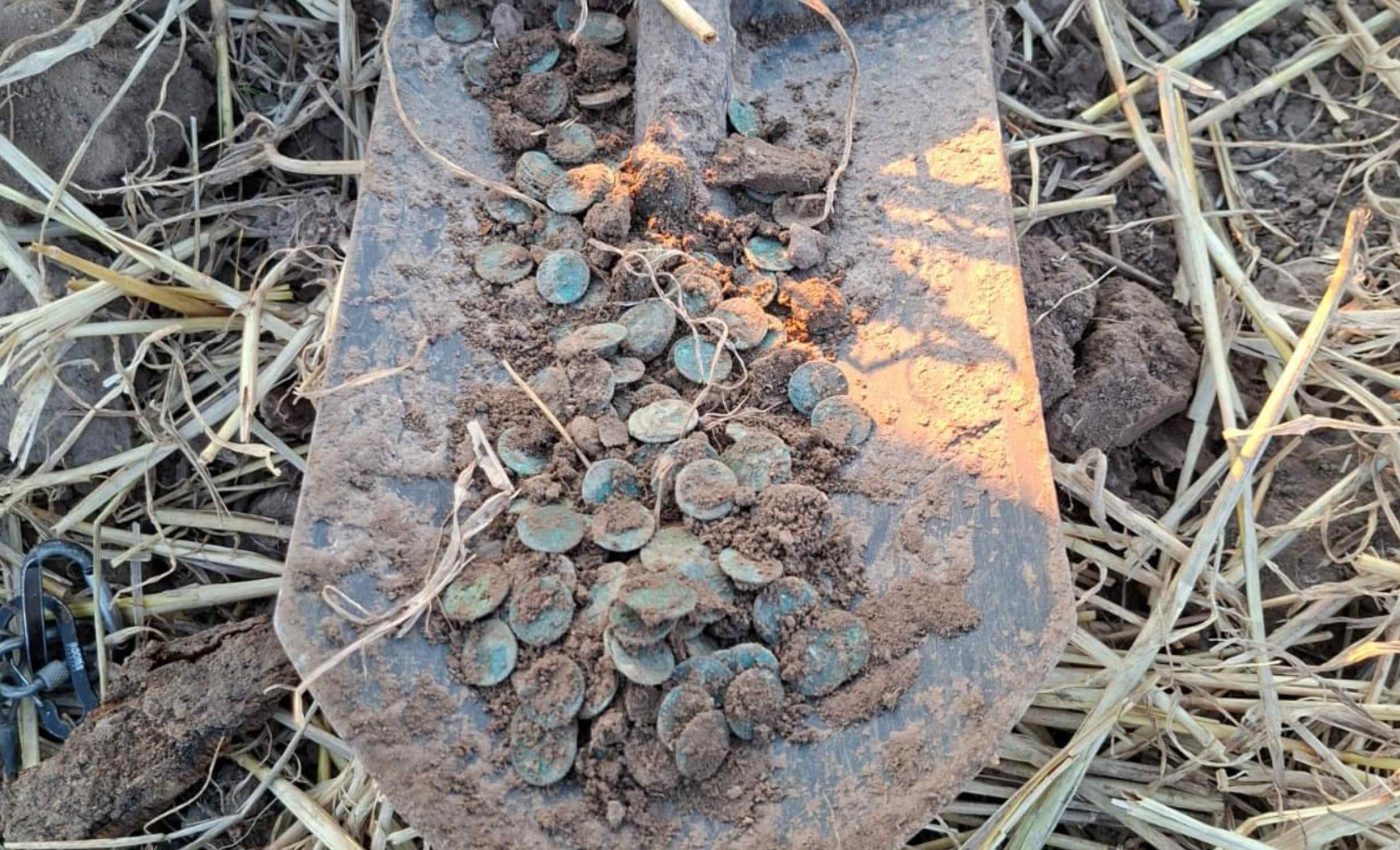
Metal detector discovers a hidden treasure of 5,000 silver coins
A local detectorist working a quiet field near Zewierszczów in eastern Poland uncovered a cluster of old silver coins, and the count quickly rose to about 5,000 pieces.
The cache includes mostly small copper coins from the mid 1600s and a smaller set of silver pieces that point to a burial around the early 1700s.
Archaeologists examined the site the next day and moved the full find to the Hrubieszów Museum for careful study. There were no surviving building remains, which fits a field that has been plowed for centuries.
Where the silver coins were found
The discovery sits in Poland’s Lublin Voivodeship, an administrative region, and it came from shallow soil disturbed by long term farming.
The detectorist reported the find to heritage officials immediately, so professionals could document and recover the coins for research and public display.
The hoard holds mostly copper pieces known as boratynki and a set of 29 silver coins of higher value.
The silver coins range from issues of Jan II Kazimierz to rulers like John III Sobieski and Leopold I, which supports the idea that someone hid the mixed bag near the start of the 18th century.
A hoard is a deliberate stash of valuables put in the ground for safekeeping, usually with the intent to come back for it.
When owners never return, the buried money becomes a time capsule that preserves what circulated in real markets.
This stash captures the small change that kept daily life going. It shows what people actually used to buy bread, pay tolls, and settle small debts, not just ceremonial or luxury coins seen in royal portraits.
The small copper workhorses
The copper coins are boratynki, minted during the reign of Jan II Kazimierz as a low value szeląg meant for routine purchases. They were organized by the Italian official Tito Livio Burattini during a period of fiscal strain.
According to specialists, hundreds of millions of these coins were minted, making single pieces common today, though complete buried hoards of them are rarely found intact.
The surge in copper coin production was driven by the need to pay soldiers during periods of unrest.
This strategy increased the state’s profit from minting currency, known as seigniorage, but also led to a widespread influx of lower-value metal into daily commerce.
Silver coin clues
The 29 silver coins change the picture because they carried more buying power. They include six grosz pieces of Jan Kazimierz and coins from other rulers active after 1660.
Silver dates in the group run into the early 1700s. Those late dates set a lower bound for when the bag went into the ground, pointing to a burial roughly three centuries ago.
Seventeenth century Poland faced wars, occupation, and heavy costs that battered state finances and daily life. Copper coins were embraced because silver stocks were tight and expensive.
People bury valuables when trust breaks down. Hoards spike in times of invasion, rebellion, or sudden fear, and once the crisis passes, some owners do not return.
From field to museum
After the initial sweep, archaeologists recorded the scatter and collected every coin fragment they could find.
The entire hoard went to the Hrubieszów Museum for cleaning and cataloging, which protects context and lets experts reconstruct the bag as it was hidden.
Conservation teams will stabilize each piece, remove harmful corrosion, and document legends and mint marks. That work reduces future damage and ensures the public can see the coins safely.
Specialists will sort the coins by issue, ruler, and mint, then study patterns in wear and metal. Those patterns reveal how fast coins traveled and how long they stayed in use.
Researchers also look for textile impressions and thread fragments that match the decayed canvas reported at the site.
If preserved, bag fibers can be dated and compared with other containers from similar finds.
The small change story
Boratynki were a tool of policy that reached into small shops, fairs, and roadside markets. They also show how states balance cost and confidence when precious metal is scarce.
The number in this hoard helps test estimates of how many were minted and how they mixed with silver. That, in turn, refines economic history drawn from field evidence rather than edicts.
A mixed hoard acts like an accidental ledger for a single household or community. It preserves the exact combination of money someone trusted enough to hide.
By studying such sets at scale, scholars map circulation across regions. They can see when new coin types appear, how long they remain common, and where they fade.
Wider search for silver coin hoards
Research on Polish coin hoards has connected patterns of buried treasure to long-term changes in monetary supply, government policy, and economic uncertainty.
One study shows that detailed cataloging can reshape our understanding of how different coin types circulated and evolved over time.
The new hoard adds an early modern chapter to that long running project. It speaks for ordinary people who carried copper for change and tucked away a little silver for safety.
Public value, clear rules
Poland’s heritage system channels such finds to public institutions for study and exhibition.
That ensures the scientific record remains intact and available to everyone, not scattered into private sales or incomplete collections.
This approach also lets museums tell richer stories about markets, wages, and prices. Coins help translate abstract history into daily choices.
It took a strong signal from a metal detector to start this tale. It will take months of patient lab work to finish it.
The result will be a clear picture of what money looked like in this corner of Europe during a hard century. The picture will rest on facts a student can check, coin by coin.
—–
Like what you read? Subscribe to our newsletter for engaging articles, exclusive content, and the latest updates.
Check us out on EarthSnap, a free app brought to you by Eric Ralls and Earth.com.
—–













